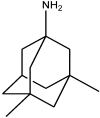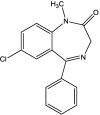NMDA Receptor Antagonists for Treatment of Depression
- PMID: 24276119
- PMCID: PMC3816696
- DOI: 10.3390/ph6040480
NMDA Receptor Antagonists for Treatment of Depression
Abstract
Depression is a psychiatric disorder that affects millions of people worldwide. Individuals battling this disorder commonly experience high rates of relapse, persistent residual symptoms, functional impairment, and diminished well-being. Medications have important utility in stabilizing moods and daily functions of many individuals. However, only one third of patients had considerable improvement with a standard antidepressant after 2 months and all patients had to deal with numerous side effects. The N-methyl-d-aspartate (NMDA) receptor family has received special attention because of its critical role in psychiatric disorders. Direct targeting of the NMDA receptor could result in more rapid antidepressant effects. Antidepressant-like effects of NMDA receptor antagonists have been demonstrated in different animal models. MK-801 (a use-dependent channel blocker), and CGP 37849 (an NMDA receptor antagonist) have shown antidepressant properties in preclinical studies, either alone or combined with traditional antidepressants. A recent development is use of ketamine clinically for refractory depression. The purpose of this review is to examine and analyze current literature on the role of NMDA receptor antagonists for treatment of depression and whether this is a feasible route in drug discovery.
Figures










































Similar articles
-
Ketamine and other N-methyl-D-aspartate receptor antagonists in the treatment of depression: a perspective review.Ther Adv Chronic Dis. 2015 May;6(3):97-114. doi: 10.1177/2040622315579059. Ther Adv Chronic Dis. 2015. PMID: 25954495 Free PMC article. Review.
-
NMDA antagonists under investigation for the treatment of major depressive disorder.Expert Opin Investig Drugs. 2014 Sep;23(9):1181-92. doi: 10.1517/13543784.2014.918951. Epub 2014 May 12. Expert Opin Investig Drugs. 2014. PMID: 24818801 Review.
-
Inhibition of in vivo [(3)H]MK-801 binding by NMDA receptor open channel blockers and GluN2B antagonists in rats and mice.Eur J Pharmacol. 2015 Nov 5;766:1-8. doi: 10.1016/j.ejphar.2015.08.044. Epub 2015 Aug 29. Eur J Pharmacol. 2015. PMID: 26325093
-
An update on NMDA antagonists in depression.Expert Rev Neurother. 2019 Nov;19(11):1055-1067. doi: 10.1080/14737175.2019.1643237. Epub 2019 Jul 22. Expert Rev Neurother. 2019. PMID: 31328587 Review.
-
An extension of hypotheses regarding rapid-acting, treatment-refractory, and conventional antidepressant activity of dextromethorphan and dextrorphan.Med Hypotheses. 2012 Jun;78(6):693-702. doi: 10.1016/j.mehy.2012.02.012. Epub 2012 Mar 7. Med Hypotheses. 2012. PMID: 22401777
Cited by
-
Nitrous oxide as a putative novel dual-mechanism treatment for bipolar depression: Proof-of-concept study design and methodology.Contemp Clin Trials Commun. 2020 Jun 23;19:100600. doi: 10.1016/j.conctc.2020.100600. eCollection 2020 Sep. Contemp Clin Trials Commun. 2020. PMID: 32637725 Free PMC article.
-
Recent Studies on Anti-Depressant Bioactive Substances in Selected Species from the Genera Hemerocallis and Gladiolus: A Systematic Review.Pharmaceuticals (Basel). 2019 Nov 25;12(4):172. doi: 10.3390/ph12040172. Pharmaceuticals (Basel). 2019. PMID: 31775329 Free PMC article. Review.
-
The role of NMDARs in the anesthetic and antidepressant effects of ketamine.CNS Neurosci Ther. 2024 Apr;30(4):e14464. doi: 10.1111/cns.14464. Epub 2023 Sep 7. CNS Neurosci Ther. 2024. PMID: 37680076 Free PMC article. Review.
-
GluN2A and GluN2B N-Methyl-D-Aspartate Receptor (NMDARs) Subunits: Their Roles and Therapeutic Antagonists in Neurological Diseases.Pharmaceuticals (Basel). 2023 Oct 30;16(11):1535. doi: 10.3390/ph16111535. Pharmaceuticals (Basel). 2023. PMID: 38004401 Free PMC article. Review.
-
A Randomized Double-Blind Placebo-Controlled Trial of Combined Escitalopram and Memantine for Older Adults With Major Depression and Subjective Memory Complaints.Am J Geriatr Psychiatry. 2020 Feb;28(2):178-190. doi: 10.1016/j.jagp.2019.08.011. Epub 2019 Aug 22. Am J Geriatr Psychiatry. 2020. PMID: 31519517 Free PMC article. Clinical Trial.
References
-
- Rosenzweig-Lipson S., Beyer C.E., Hughes Z.A., Khawaja X., Rajarao S.J., Malberg J.E., Rahman Z., Ring R.H., Lee E., Schechter L.E. Differentiating antidepressants of the future: Efficacy and safety. Pharmacol. Therapeut. 2007;113:134–153. - PubMed
-
- Richelson E. Synaptic pharmacology of antidepressants: An update. McLean Hosp. J. 1988;13:67–88.
LinkOut - more resources
Full Text Sources
Other Literature Sources

